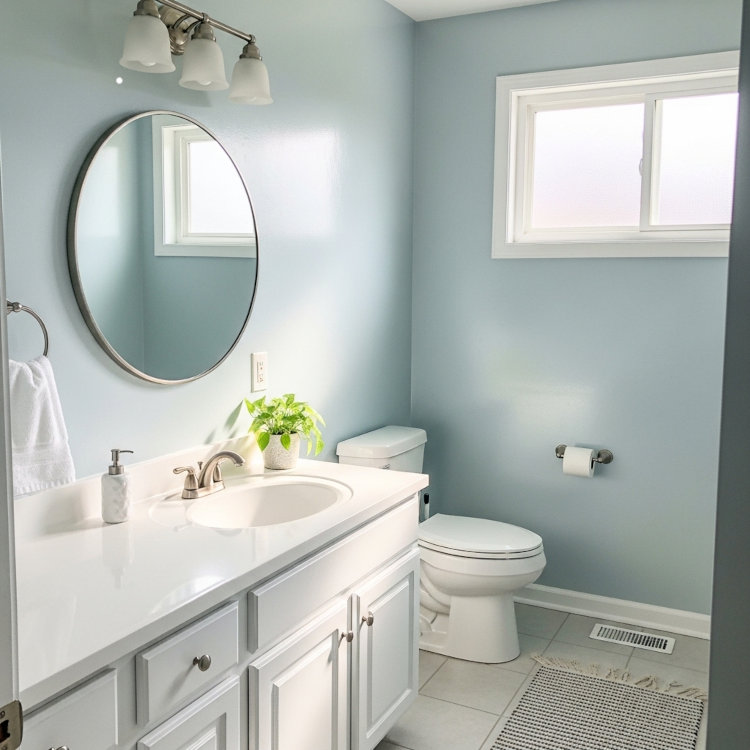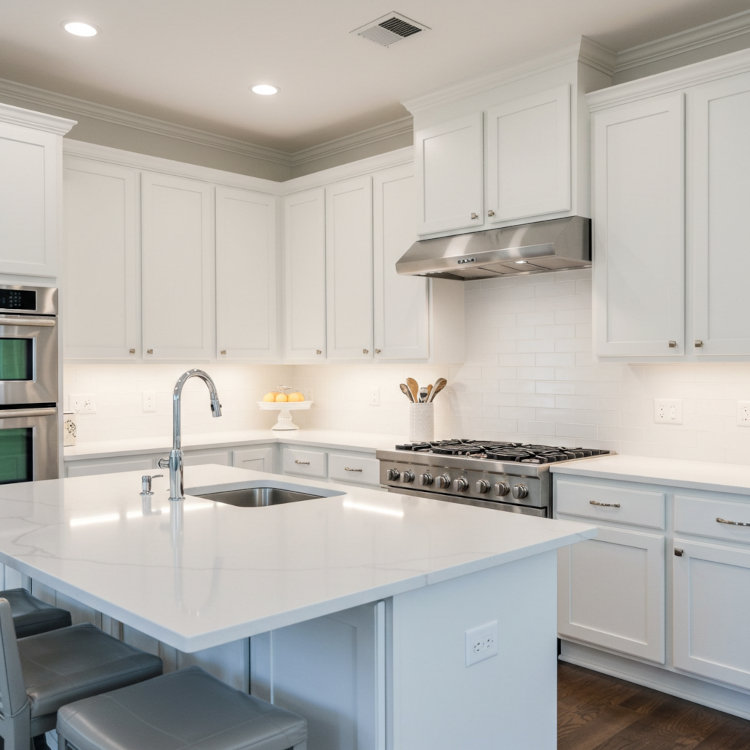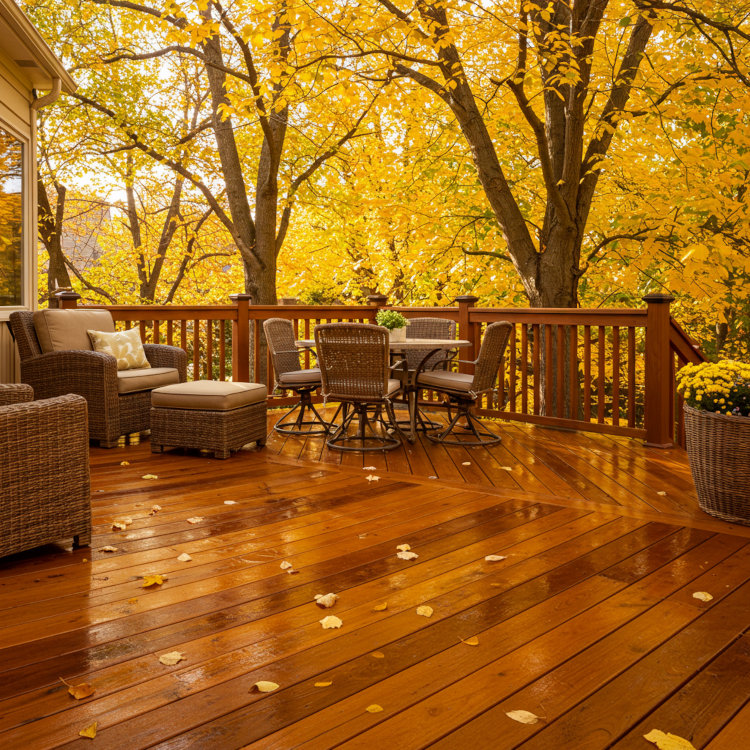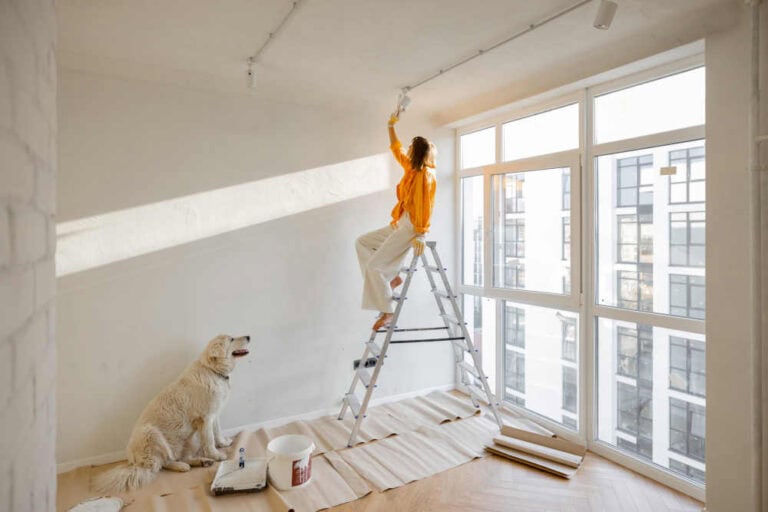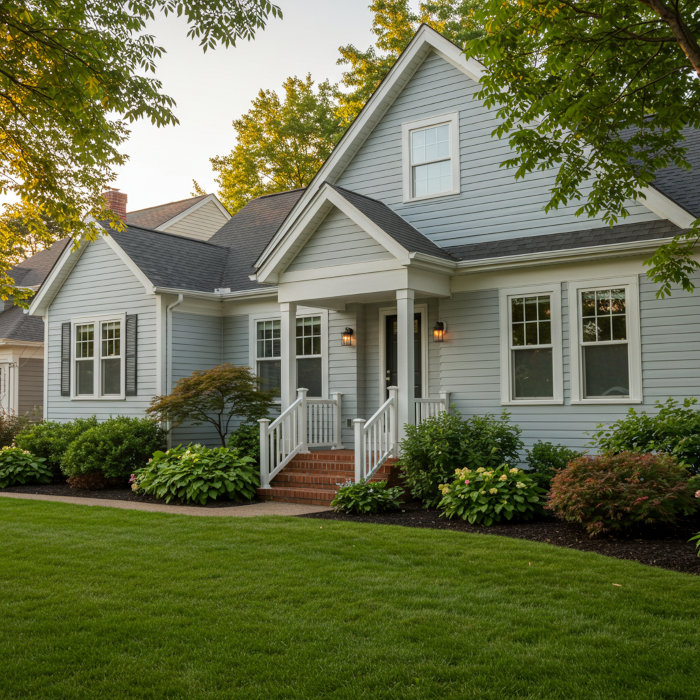As an Amazon Associate, I earn from qualifying purchases. Privacy Policy / Terms
Painting a bathroom may be one of the smallest painting projects in your home, but it still requires attention to detail and the right products to handle humidity, temperature changes, and daily wear. A fresh coat of paint can make the space feel brighter, cleaner, and more inviting while protecting surfaces from moisture damage.
For homeowners across Ohio, understanding how much it costs to paint a bathroom and what factors influence that price helps you plan a realistic budget and avoid surprises.
What do painters charge to paint a bathroom?
The cost to paint a bathroom depends on several factors, including its size, the amount of prep work needed, and the quality of paint and materials chosen. In general, professional painters base their pricing on the room’s square footage, the complexity of the surfaces, and whether ceilings or trim are included.
Smaller powder rooms may cost less, while larger bathrooms with high ceilings or extra trim work can reach the upper end of that range. The price also depends on whether you choose standard interior paint or specialty moisture-resistant products.
Professional painters evaluate each space based on:
- Surface condition and preparation needs
- Paint type and finish (satin, semi-gloss, or high-gloss)
- Number of coats required for full coverage
- Additional detail work, such as door frames, trim, or cabinetry
While DIY painting can reduce labor costs, professional painters deliver smoother finishes, longer-lasting results, and time savings that often make the investment worthwhile.
How long does it take a professional painter to paint a bathroom?
A professional painter can typically complete a standard bathroom in one day or less, depending on the amount of prep work required. Small powder rooms often take only a few hours, while larger bathrooms may need additional time for drying between coats.
If the walls require patching, sanding, or priming, the project may extend into a second day. Professional painters usually follow a precise sequence to ensure efficiency and quality results:
- Prep and clean surfaces to remove dust, residue, or mildew.
- Apply primer on previously painted or glossy walls.
- Paint walls, ceilings, and trim using high-quality moisture-resistant paint.
- Allow proper drying time before applying a second coat or reinstalling hardware.
Since bathrooms experience constant humidity and temperature changes, painters also focus on proper ventilation to prevent paint bubbling or early wear.
How many coats of paint does a bathroom need?
Most bathrooms require two coats of paint for consistent color and full protection. The first coat establishes coverage and adhesion, while the second enhances durability and appearance.
High-moisture environments like bathrooms benefit from extra protection. Using moisture-resistant paint designed for interior walls reduces mildew growth and helps the finish last longer. Paints with satin or semi-gloss finishes work best, as they are easy to clean and resist moisture.
If you are repainting over a dark or glossy surface, applying a quality primer first ensures that the new paint adheres evenly and maintains color accuracy.
Additional Factors That Affect Bathroom Painting Costs
The final price for a bathroom paint job depends on several factors beyond size alone. Professional interior painters assess details like layout, ventilation, and condition before quoting a price.
Common cost influences include:
- The number of walls and total square footage
- The type of paint finish and brand quality
- The amount of trim, doors, or built-in shelving
- Ceiling height and accessibility
- Any additional repairs, such as patching holes or caulking gaps
Homeowners should also consider paint quality when budgeting. Cheaper products may require additional coats or fade faster in high-moisture areas, while premium paints often provide better coverage and resistance over time.
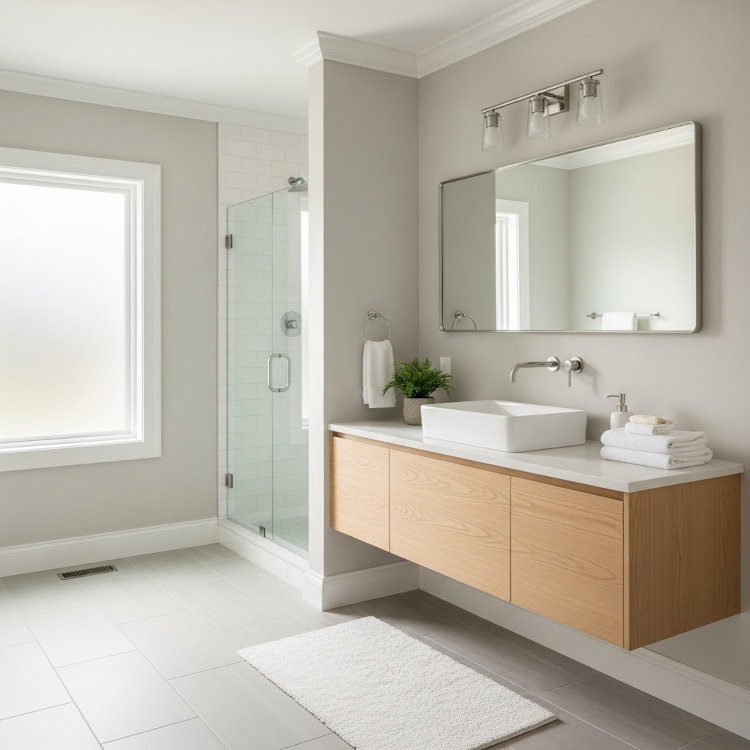
What Is the Best Paint to Use in a Bathroom?
Bathrooms are among the toughest environments in any home for paint performance. The constant exposure to humidity and steam can cause peeling, mildew, and uneven color if the wrong paint is used.
When choosing paint for bathrooms, professional painters often recommend:
- Satin or semi-gloss finishes for easy cleaning and moisture resistance.
- Mildew-resistant formulas that prevent mold growth.
- Light, reflective colors to make smaller spaces appear larger and brighter.
Professional painting services ensure even coverage, clean lines, and properly sealed surfaces — especially important in small rooms where imperfections are easy to spot.
How Often Should You Repaint a Bathroom?
Most bathrooms should be repainted every five to seven years, depending on how much moisture exposure they receive. Frequent use, limited ventilation, or poor-quality paint may shorten that timeline.
If you notice peeling, discoloration, or dull finishes, repainting will refresh the look and protect surfaces from long-term damage. For homeowners updating interior colors before listing their property, a newly painted bathroom can also enhance overall home value and appeal.
Final Thoughts
Painting a bathroom is one of the most affordable and high-impact home improvement projects. Whether updating color, repairing old finishes, or simply refreshing the look, professional painters can complete the job quickly and efficiently while ensuring long-lasting protection.
With proper prep, quality products, and professional application, your bathroom will not only look brighter but also withstand years of daily use. Investing in professional bathroom painting is an easy way to improve comfort, aesthetics, and property value all at once.
Views Expressed DisclaimerThe views, opinions, and information presented in this article are for informational purposes only and do not necessarily reflect the official policies or positions of Crocker Home Painting Company. While every effort has been made to ensure accuracy, Crocker Home Painting Company is not liable for any errors, omissions, or decisions made based on the content provided. Readers are encouraged to consult professionals for specific advice or assistance related to their unique circumstances.

